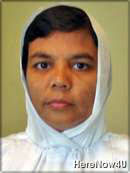 | 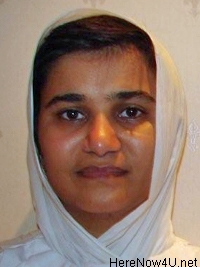 |
| Samani Prasanna Pragya | Samani Vikas Pragya |
By Mrs. Pragna A. Damani and Dinesh Z. Shah
Navratri is a very important Hindu festival celebrated in India, which is devoted to goddesses Durga, Amba, and Kali as well as other Hindu deities. The festival is celebrated with great reverence and faith across the country. It stretches over a period of nine nights, with each of the night being dedicated to one of the nine forms of the particular goddess.
There are two Navratis in a year. Chaitra Navratri is around the spring equinox and Ashwina Navratri is around the autumn equinox. As the earth moves round the sun the duration of days and nights are constantly changing throughout the year. However, on the day of the equinox the length of the day is exactly the same as the length of the night (except at each pole, where it will be about to change from permanent light to permanent darkness, or vice versa). As the duration of days and nights are almost equal during Navratri, nature is in equilibrium. Also from an astrological angle, Navratri is considered an auspicious time because of the position of the nine major planets at that juncture.
The late Acharya Tulsi and the late Acharya Mahapragya felt that as the primary aim of the Navratri festival is to awaken our inner power there are special mantras in Jainism to harness the cosmic energy. This energy firstly, acts as a cleansing agent and subsequently acts as a catalyst to bring inner purity, brightness and serenity as well as bring external changes in our lives. The planets have a direct effect on our nine chakras (psychic centers) which have a bearing on our mental, emotional and physical wellbeing. The late Acharya Tulsi and the late Acharya Mahapragya thus initiated the practice of navanhik spiritual anusthan during the time of the Navratri.
Before the onset of this festival Samani Prasanna Pragya therefore organised a lecture at Shree Pravinbhai and Smt. Kokilaben Mehta’s house in Edgware, North London on Sunday, 25th September 2011 to explain about this Jain method of celebrating the Navrati festival. She made it clear at the outset of her lecture that only a small number of Jains are aware of this Jain way of celebrating Navratri. She stated that the late Acharya Mahapragya wrote a book on this subject in Hindi titled, “Saddhna and Siddhi” and this book has subsequently been translated into Guajarati language. During this anushthan devotees also practice penances like upavas, ekashana, ayambil, etc. to generate additional strength in their spiritual quest.
The Navratri festival began on Wednesday, 28th September and was concluded on 5th October 2011. This year instead on the normal nine days of festival, it was held for eight days. Every evening from 8pm to 9pm the mantras were recited in the following order:
Chandesu nimmalyara, aaicchesu ahiyam payaasayara,
Saagara var gambhiira siddha siddhim mama disantu - 5 Times
Chandesu nimmalyara, siddha siddhim mama disantu - 13 Times
(Focus on the Centre of Enlightenment; Visualise - Full moon white colour)
Aaicchesu ahiyam payaasayara, siddha siddhim mama disantu - 13 Times
(Focus on the Centre of Intuition; Visualise - Rising sun red colour)
Saagara var gambhiira, siddha siddhim mama disantu - 13 Times
(Focus on the Centre of Purity; Visualise - Peacock neck’s blue colour)
Aarogga-bohilaabham, samaahivaramuttamam dintu -13 Times
Siddha siddhim mama disantu - 21 Times
Chandesu nimmalyara, aaicchesu ahiyam payaasayara,
Saagara var gambhiira, siddha siddhim mama disantu - 5 Times
(The above mantras are taken from Chaturvimshati Stava - Hymn of Praise to the 24 Tirthankars)
Upsargahar Stotra: Uvasaggaharam Paasam Paasam Vandaami Kamma Ghana Mukkam,
Vishahar Vishaninnaasam Mangal Kallaana Aavaasam.
Vishahar Phuling Mantam Kanthe Dhaarrei Jo Saya Manuo,
Tassa Gaha Rog Maari Duttha Jaraa Janti Uvasaamam.
Chitthau Dure Manto Tujjha Panaamo Vi Bahufalo Hoi,
Naratiriyesu Vi Jiva Paavanti Na Dukkha Dohaggam.
Tuha Sammatte Laddhe Chintamani Kappa - Paaya - Vabbhahiye,
Paavanti Avigghenam Jiva Ayaraamaram Thaanam.
Eha Santhuo Mahayas Bhattibbhar Nibbharen Hiyaena,
Ta Dev Dijja Bohim Bhave Bhave Paas Jinachanda.
Om Hrim Shreem Arham Namioon Pas Visahar Vasah
Jin Fulling Hrim Shreem Naamh - 9 Times
Before the start of the chanting Samani Prasanna Pragya recited a vow of samayika for the benefit of any members of the congregation who wanted to practice this first avashyaka.
At the beginning of each chanting, Samaniji Vikas Pragya explained the meaning of the verse. She also guided on which psychic centre to focus on together with the colour to visualise during the chanting. In order to ensure that the mantras were pronounced correctly and an appropriate rhythm followed, Samani Vikas Pragya led the chanting at the beginning of each verse. After the conclusion of the jaap, everyone felt energised and started appreciating tangible as well as intangible benefits of these prayers.
After the conclusion of the jaapevery evening, Samani Prasanna Pragya explained the meanings of the words in each stanza of the Upsarghhar Stotra.These sessions gave an insight into the guru sishya system of learning. In one of the sessions Samani Vikas Pragya gave a history of this revered Prakrit language stotra which is dedicated to Lord Parsvanatha. The other name of this hymn is Uvassagaram Stotra composed by Bhadrabahu Swami who was the sixth spiritual patriarch under the monastic order established by Lord Mahavir. On the last day of the Navratri after the recitation of the jaaps, a quiz was organised to test the knowledge of the members of the congregation on the various aspects of the festival.
Samani Prasanna Pragya on behalf of Jain Vishva Bharati London thanked Shree Nileshbhai and Smt Varshaben Dodhia for their hospitality and allowing the use of their house in Kenton, Harrow for navanvhik spiritual anushthan during the Navratri festival.
Photos:
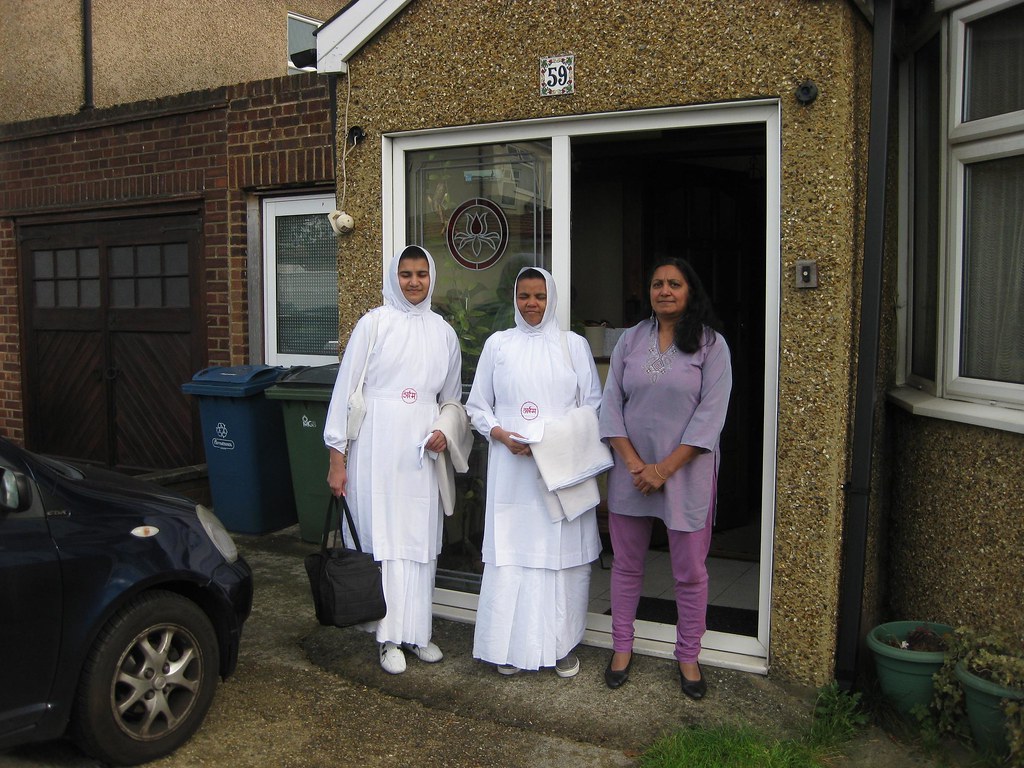 |
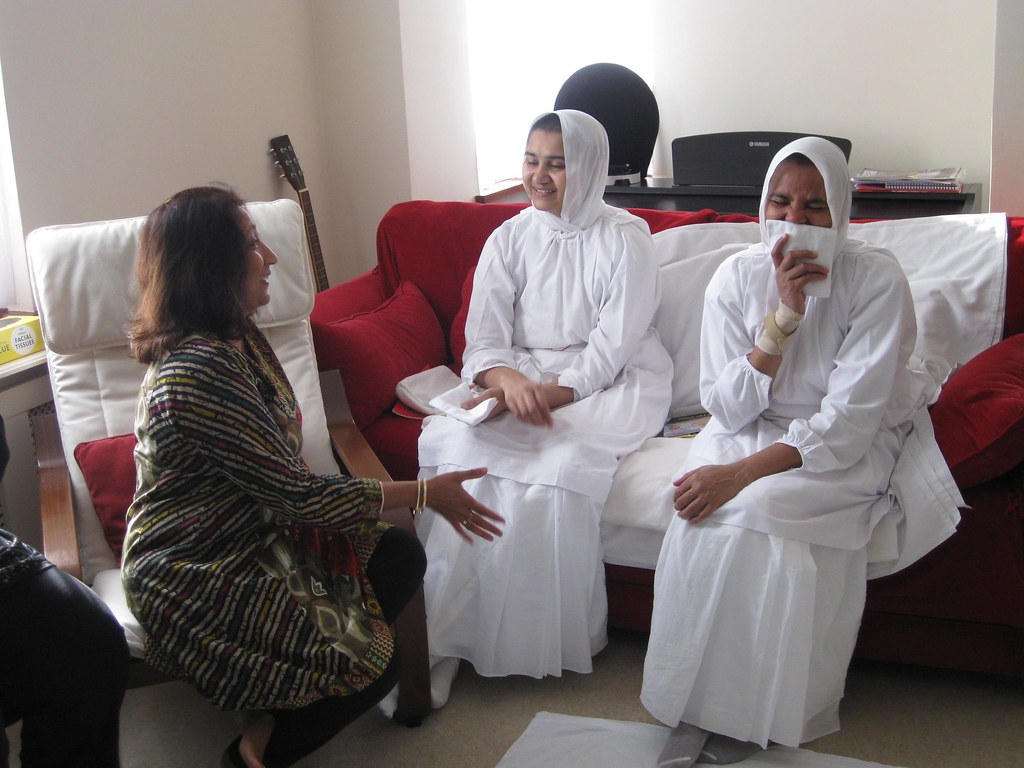 |
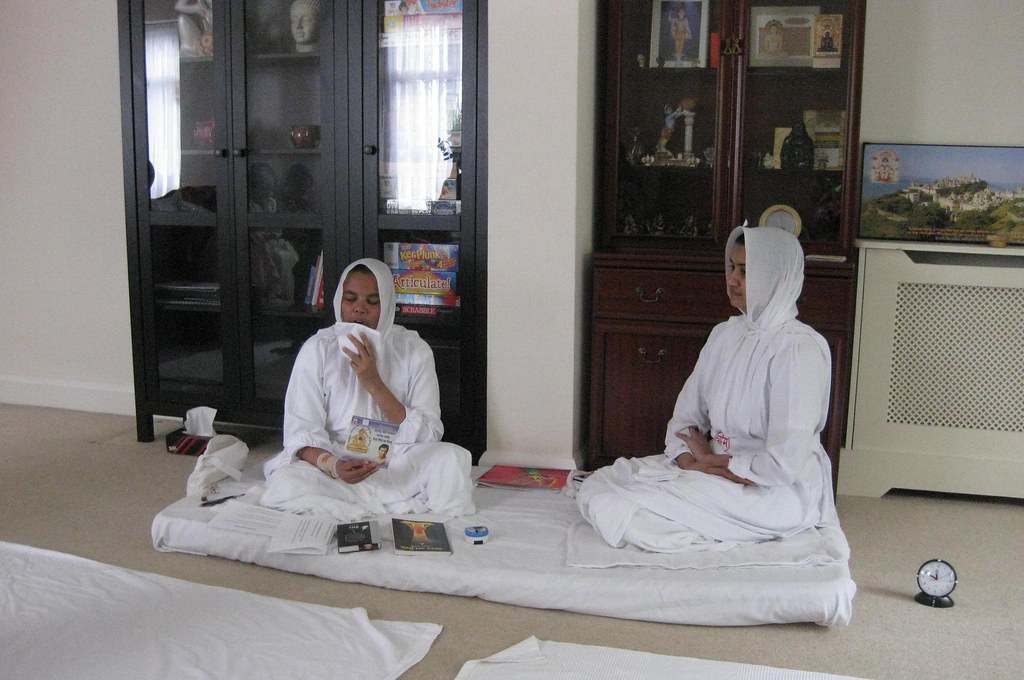 |